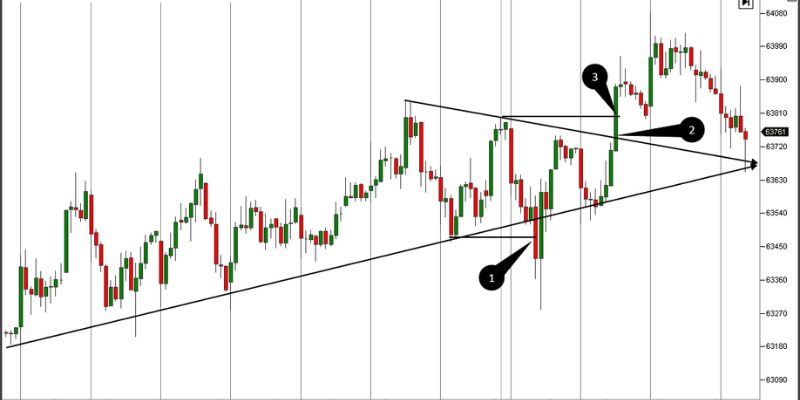How to Identify Entry and Exit Points in Stock Market
Triston Martin
Oct 10, 2023
The stock market can be a great tool for investors to make money, but it can also be an intimidating and complex place. Understanding how to identify entry and exit points is essential to maximize your profits in the stock market.
We'll discuss entry and exit points, why they matter when trading stocks on the market, and strategies for identifying them accurately and successfully. Whether you're a novice investor or a seasoned trader looking for tips on finding better entry & exit points in the stock market.
Entry & Exit Points In the Stock Market

Entry and exit points are when an investor decides to buy or sell a stock. Entry points refer to when an investor buys a stock, while exit points refer to when an investor sells it.
Entry and exit points are critical for investors because they allow them to maximize their profits by entering the market at the most reasonable time and exiting before any potential losses occur. As such, identifying entry & exit points accurately is essential for successful investing in stocks.
Types Of Entry Points

There are several different types of entry points that investors can use when trading stocks on the market.
Breakouts
A stock breaks out of its historical price range and moves upwards, indicating it may be ready to move higher.
Pullbacks
Pullbacks occur when a stock retraces some gains from a prior breakout or rally, allowing investors to buy at cheaper prices than during the initial rise in value.
Reversals
Reversals are when an uptrend reverses itself and begins to decline, signaling that it may be time for investors to sell their stocks before suffering losses.
Support & Resistance Levels
Support and resistance level refers to certain price levels which act as either barrier of support (when prices don't fall below this level) or resistance (when prices don't rise above this level).
Types Of Exit Points
Like entry points, investors can use several different types of exit points when trading stocks.
Take Profit
These are when an investor sells a stock when it reaches a certain price target to guarantee the profits they have made from the initial purchase.
Stop Loss
An investor sells a stock if it falls below a certain price point to prevent any potential losses from worsening.
Trailing Stops
This is where an investor sets up a stop loss at a percentage or dollar amount below the current market price and adjusts this as the stock rises so that the maximum loss is limited to what was originally set.
Time-Based Exit
Time-based exit is when an investor sets a predetermined amount of time for which they will hold the stock before selling it, regardless of whether or not their profits or losses have reached a certain threshold.
By understanding and utilizing these various entry and exit points, investors can maximize their chances of profit from stock trading and minimize any potential loss risks associated with the market.
When combined with other strategies, such as trend analysis and technical indicators, entry, and exit points can be powerful tools to help investors make more informed decisions in the stock market.
Why do Entry & Exit Points Matter?
Entry and exit points are crucial in determining a trader's goals and strategy for success in the stock market. By analyzing the data of a particular stock, traders can identify entry and exit points that will make the most sense for their investments.
Entry and exit points can help traders to limit their risk by allowing them to buy a stock at its lowest point and then sell it when prices are at their highest. This strategy allows investors to maximize profits while minimizing the potential risks of investing in stocks.
How To Determine The Entry Point most simply?
The simplest way to determine the entry point for a stock is to look at its past performance and identify a pattern. By looking at the historical data of a particular stock, you can find patterns that will help you determine when it might be a good time to purchase shares.
You should also consider economic factors such as interest rates, inflation, and employment levels that could affect the value of your stock over time. You can use fundamental analysis tools such as Technical Analysis or charting to identify patterns to determine when it may be best to enter the market with your investments.
Exit A Trade, With Targeted Profit Or Trailed Stop Loss
The decision of whether to exit a trade with targeted profit or trailing stop loss ultimately depends on the trading style of the investor. Targeted profits involve setting an amount you would like to gain from your trade and closing it once this number is reached.
Trailed stop losses involve setting a certain percentage or dollar value below which you will sell your stock to limit risk exposure. Both methods have advantages and disadvantages; for example, a trailed stop-loss helps protect investors against large losses if the stock market suddenly turns downwards while allowing them to reap some profits.
Calculating Entry Points
Calculating entry points is a skill that requires knowledge of technical analysis and an understanding of the stock market. Technical analysis involves studying chart patterns, indicators, moving averages, and other data to determine when it might be best to enter the market.
For example, traders may look at support and resistance levels or trends to identify potential trade entry points. Calculating the risk-reward ratio can help investors decide whether entering a particular trade is worth it based on the potential reward relative to the level of risk involved.
Calculating Exit Points
Calculating exit points is just as important for investors as calculating entry points. Exit points should be determined to prevent traders from holding onto a stock too long and suffering losses due to market volatility or unexpected events.
Traders can use technical analysis tools such as chart patterns, indicators, or moving averages to identify potential trade exit points. Investors should also consider setting trailing stop losses and profit targets when creating their trading strategy to help protect their investments against volatile markets and unforeseen risks.
FAQS
Which indicator is best for exiting a trade?
The best indicator for exiting a trade depends on the investor’s trading style and goals. Technical analysis tools such as chart patterns, indicators, or moving averages can help identify potential exit points. Traders may want to consider setting trailing stop losses and profit targets when creating their trading strategy to help ensure that their investments are protected against volatile markets and unforeseen risks.
What is the best EMA for entry and exit?
The best EMA (Exponential Moving Average) for entry and exit depends on the individual investor’s trading style and goals. Generally, a shorter-term EMA, such as 7 or 14 days, may identify short-term trends and help traders find potential entry points. Conversely, a longer-term EMA, such as 50 or 200 days, may identify long-term trends and help traders find potential exit points.
What is the 5 8 13 21 EMA strategy?
The 5 8 13 21 EMA strategy is a trading system based on exponential moving averages (EMA). This strategy uses five different EMAs with varying lengths, 5-day, 8-day, 13-day, 21-day, and 50-day. The shorter time frame EMAs are used to identify potential entry points, while the longer time frame EMAs are used to identify potential exit points.
Conclusion
It cannot be stressed enough how essential it is to become proficient in understanding the stock market. Correctly assessing entry and exit points can maximize success and minimize risk; these strategies will improve overall trading performance over time. Looking for key indicators such as news reports, chart trends, or signals from support and resistance lines can drastically improve your ability to successfully identify entry and exit points within the stock market.







